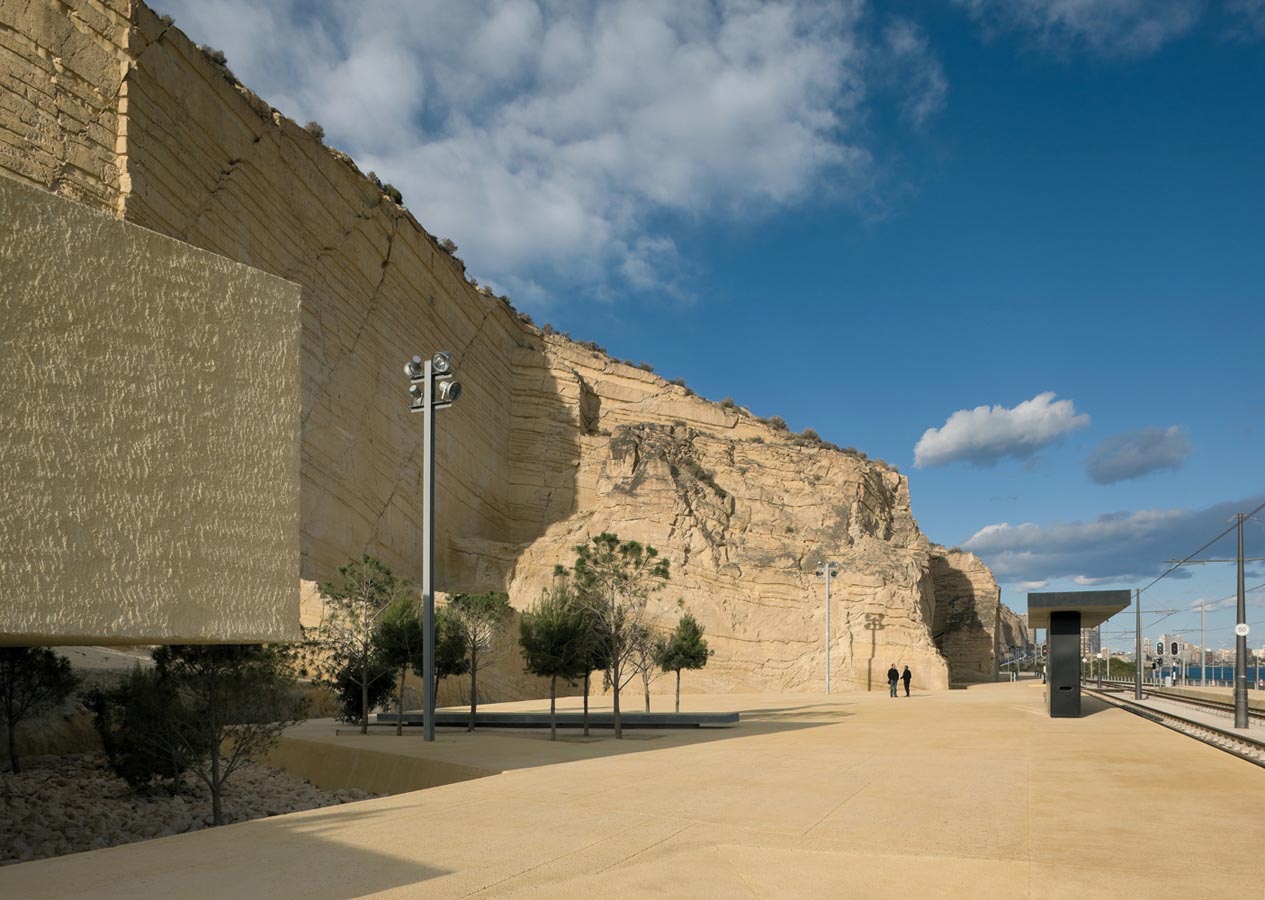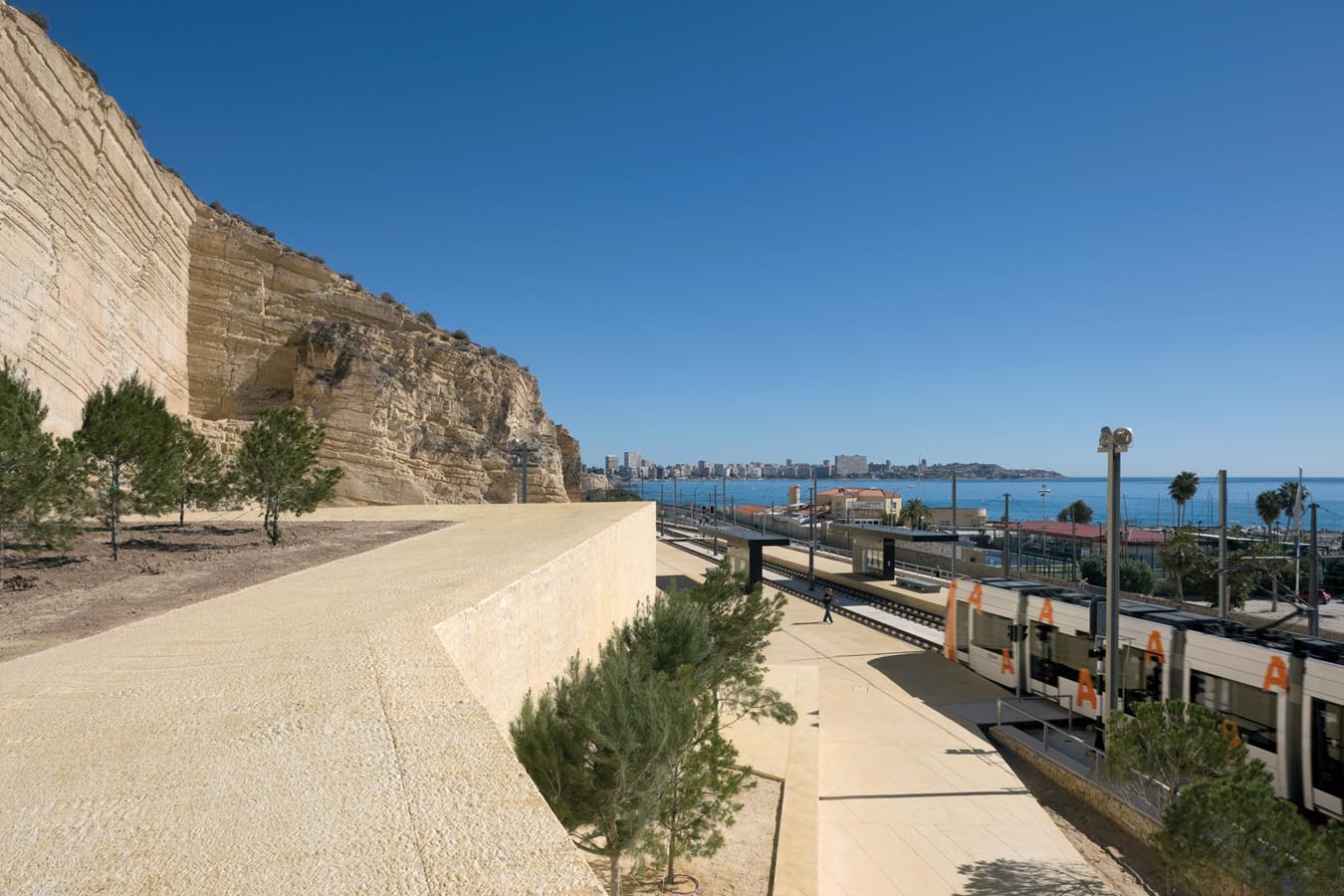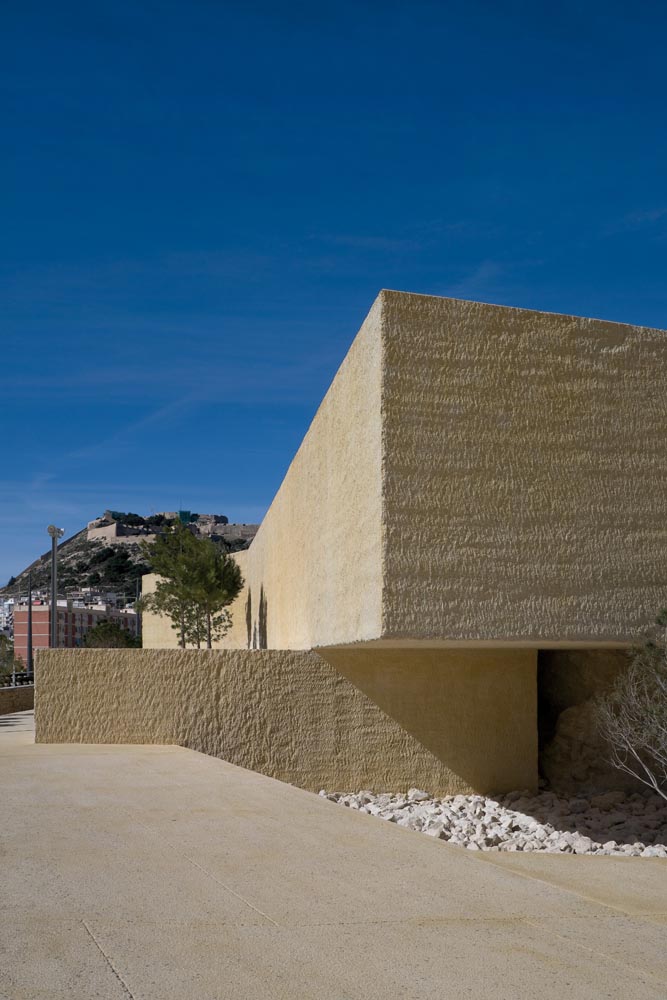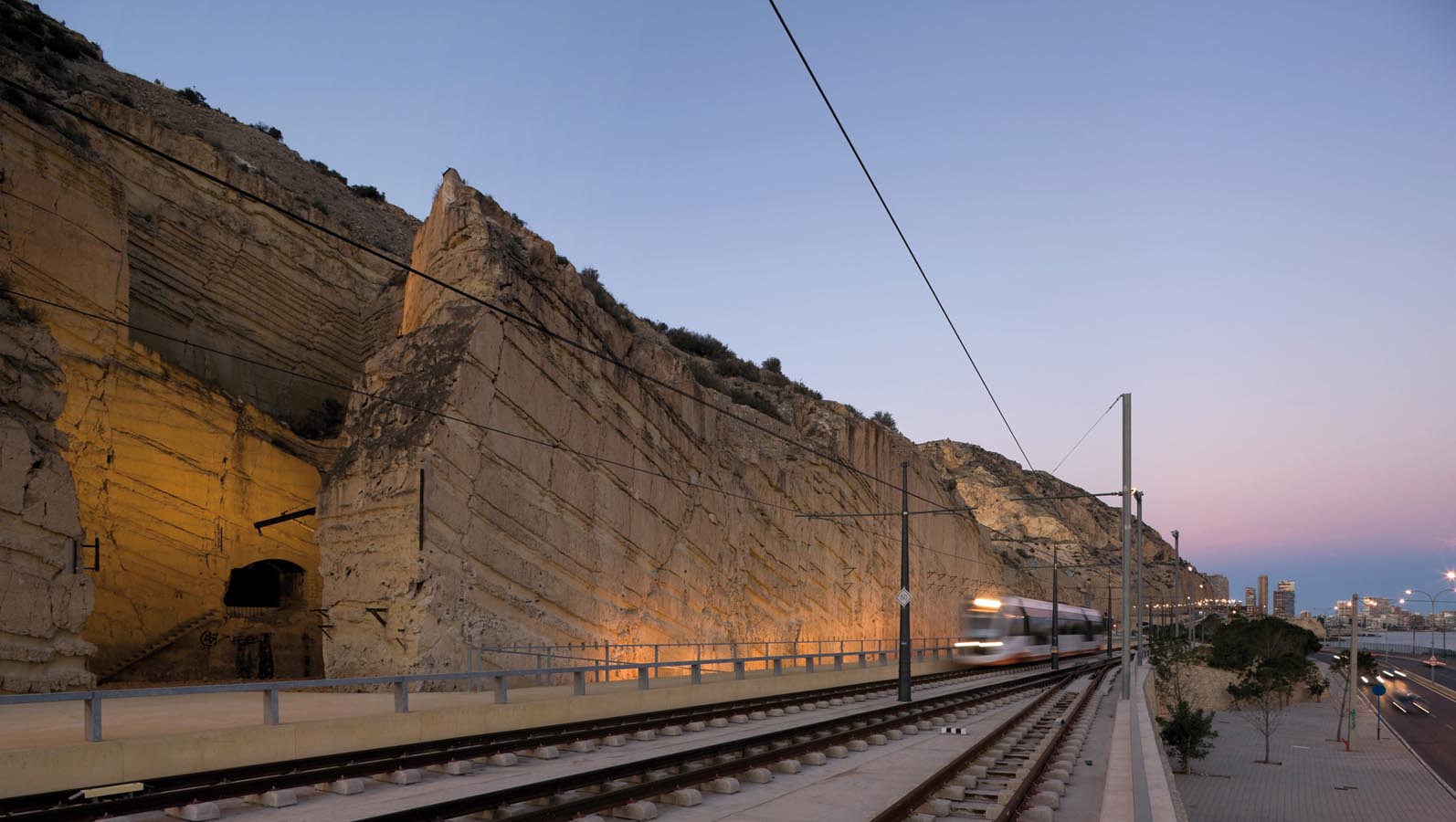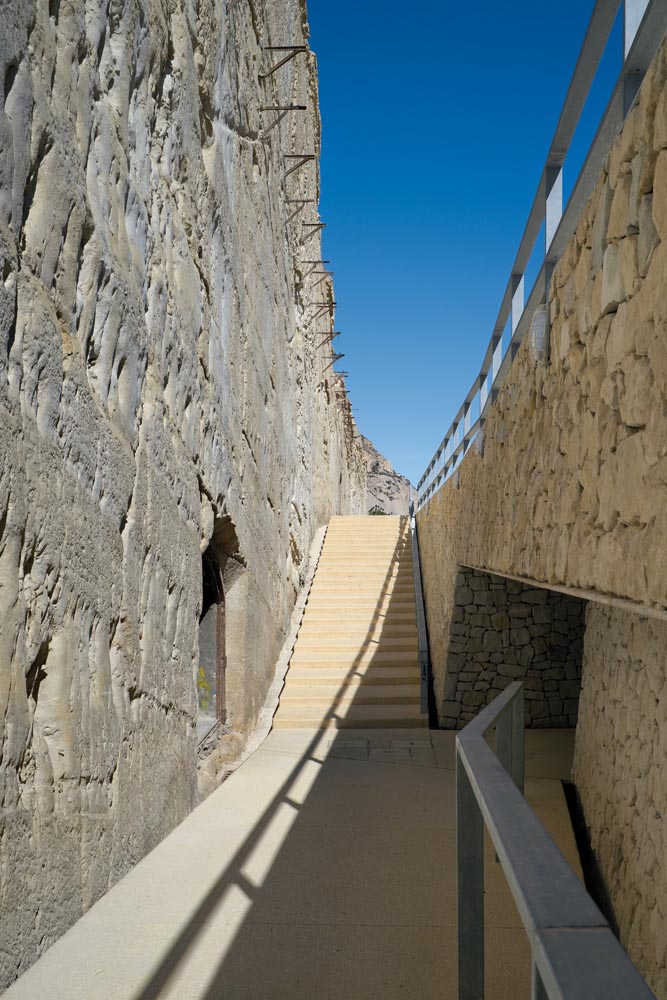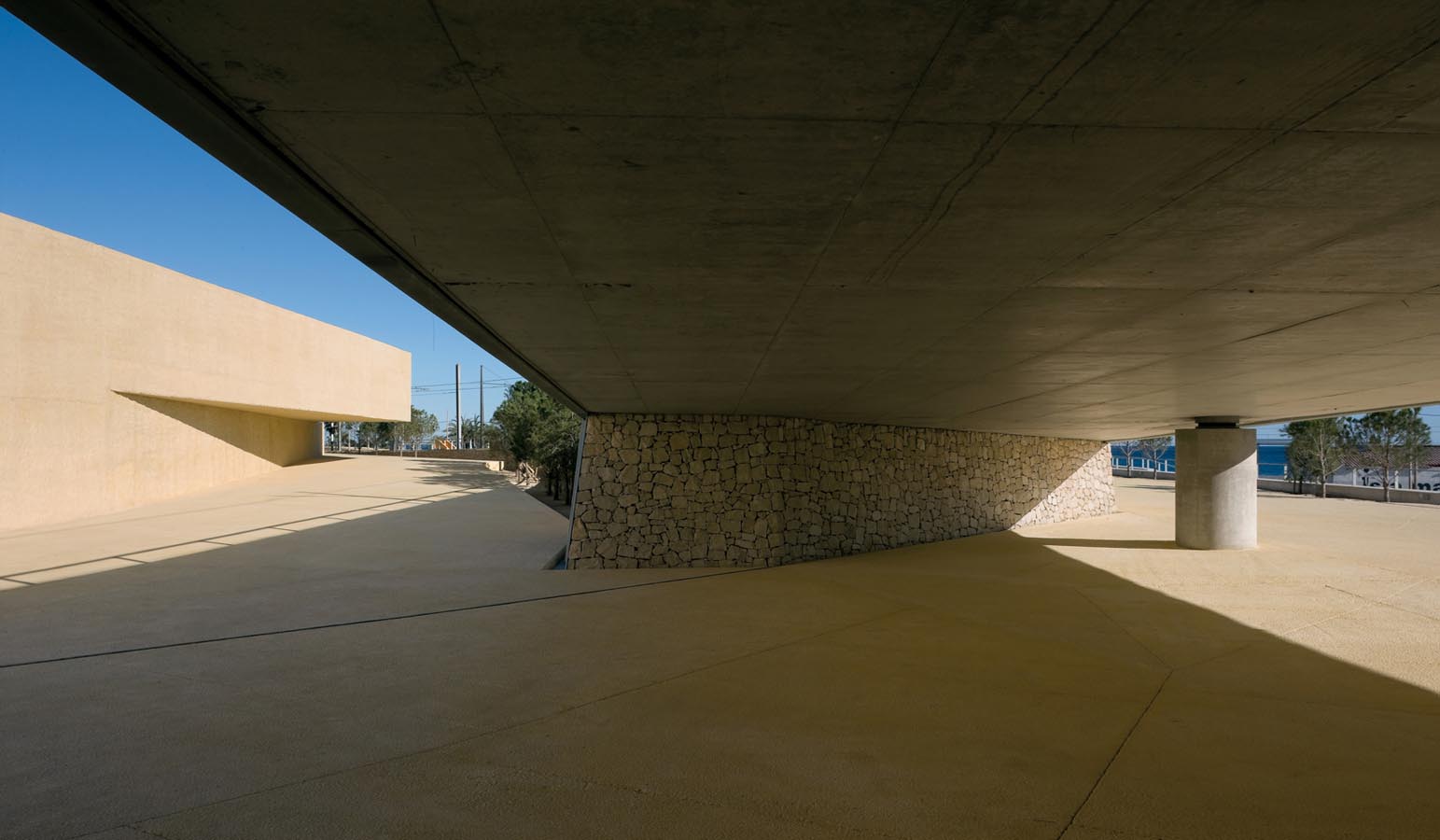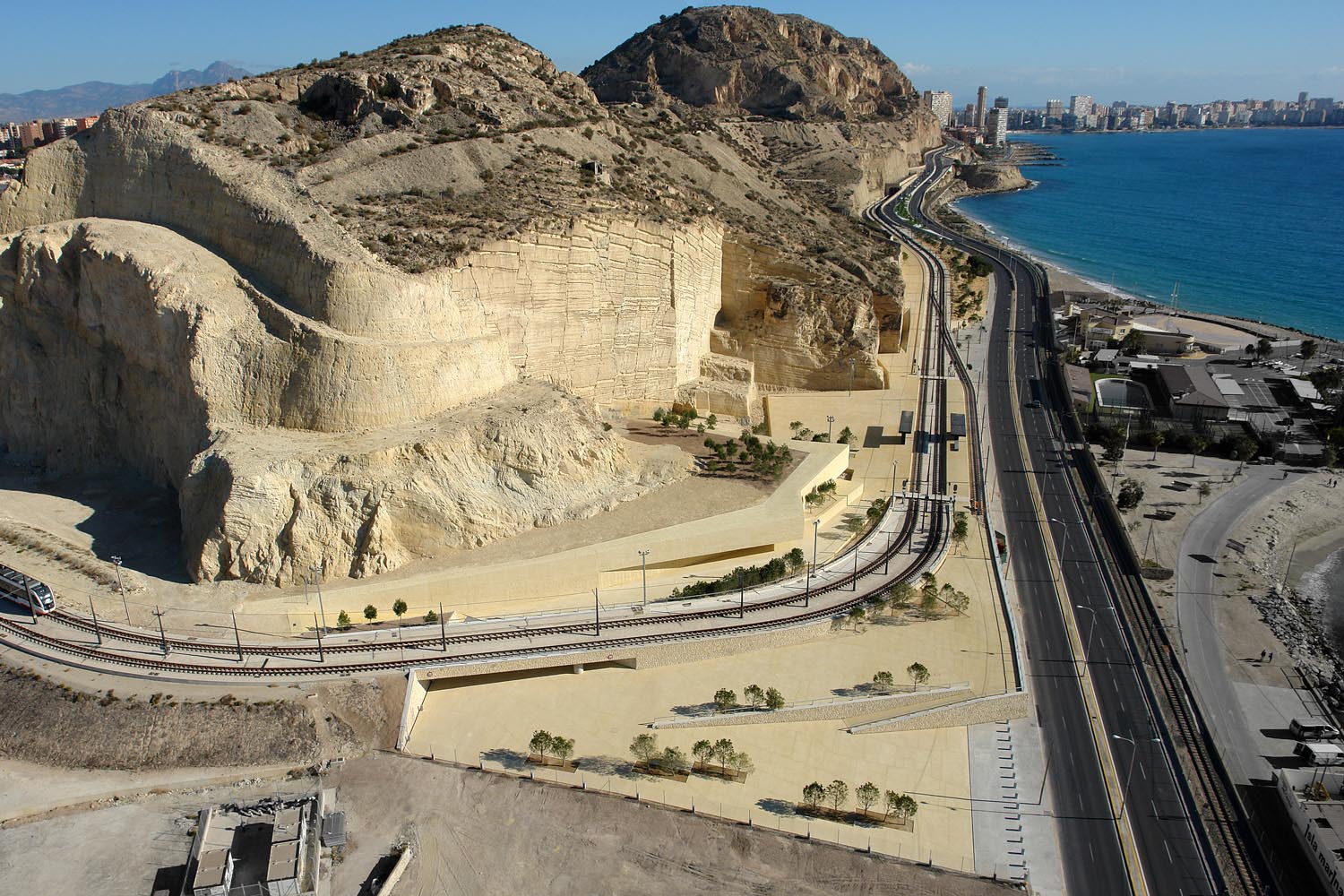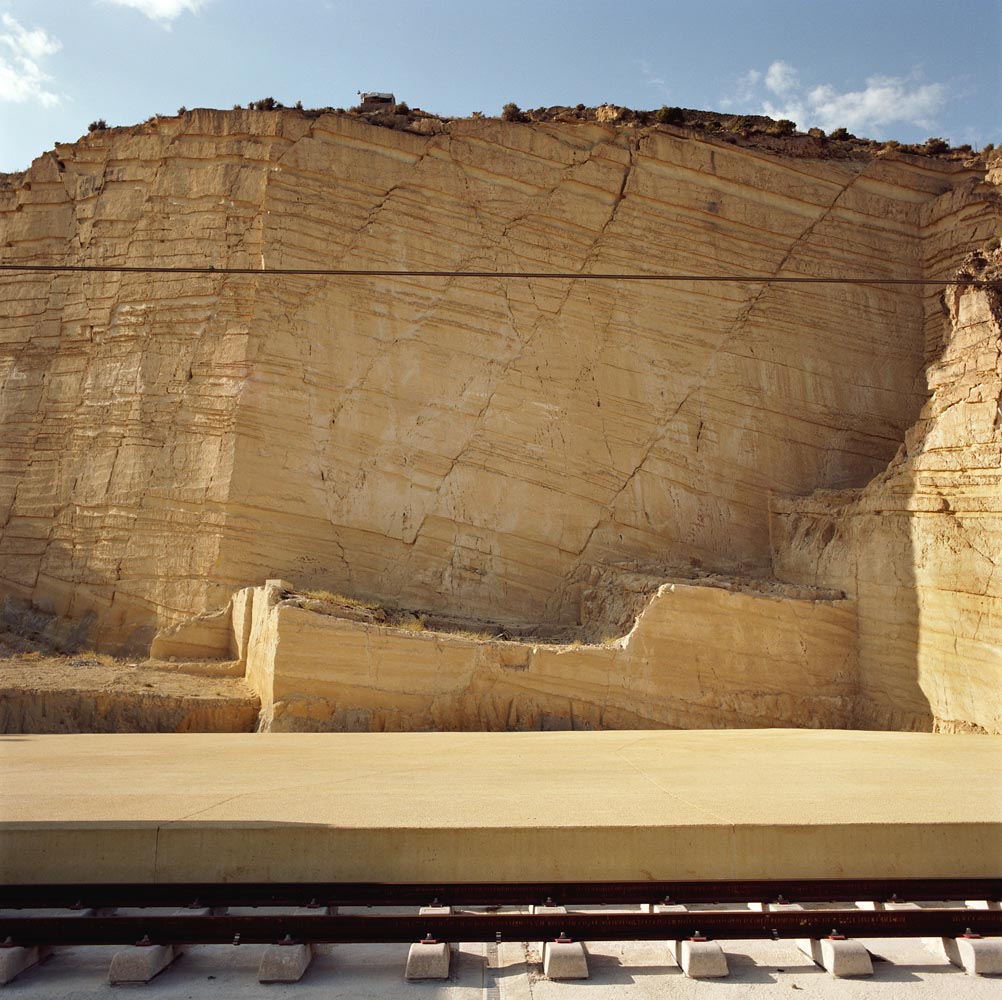Previous state
The Serra Grossa is a rocky mountain range to the northeast of Alicante, emerging next to the sea and leaving just enough space for the road and the tramline between rock and water. An old quarry sculpted its marine face into an impressive landscape of vertical planes of hewn rock and transformed the natural topography of the place to the extent of opening up a large flat area that, after 1875, was used as the site for a refinery known as “La Británica”. In time, these installations came to supply half of Spain’s petrol consumption, spreading over the mountain with the construction of a chimney, a number of plants, two fuel tanks and a large retaining wall.During the years of upheaval in the Spanish Civil War, when fuel became a priority strategic resource, “La Británica” had its period of most spectacular growth. Submitted to strict rationing and intense vigilance, the fuel started to be stored inside a vast system of underground galleries and depots, which silently gutted the Serra Grossa. The installations worked to full capacity until 1966 when the construction of new tanks in the port of Alicante led to their closure. Entry points to the underground storage places were sealed and the galleries and depots fell into oblivion.
Aim of the intervention
With the change of millennium, the Generalitat (Government) of the Province of Valencia began to consider extending the metropolitan tramway system by lengthening the Line 1 to serve the northern beaches and connect Alicante with Benidorm. The extension had to pass through the strip separating Serra Grossa from the sea, with a tram stop in front of the old “La Británica” refinery. The new stop thus constituted an opportunity to develop the extension of land at the foot of the hewn rock wall in front of the entrance to the underground storage installations and to rescue this highly representative part of the landscape from neglect and oblivion.Description
The new Line 1 stop consists of two metal shelters set into an esplanade paved with slabs of concrete. The esplanade, fruit of the demolition of the two outside tanks of the old refinery, faces the sea in a south-easterly direction. The remainder of its perimeter is emphatically delimited by two hewn rock walls and a new raised right-angled platform that functions as a lookout with views over the sea. At night, the cut rock walls are lit from below with ground-level lighting. The paving of the esplanade extends northwards, covering the space that separates the tramline from the mountain, while giving access to the sealed entrance of the underground storage installations. It also spreads southwards, dropping to form a crevice between the raised platform and the tramlines. At this point there are some stairs that lead down to a lower-level passageway through which to reach the other side of the lines and the road.Assessment
Public interest in the extension of a transport network in its own right is now even greater thanks to the benefits of a landscaping project that has given access and visibility to an emblematic place that had lapsed into a state of abandonment and disrepair. The intervention has entailed cleaning-up operations that, like the demolition of the outside tank, were not exempt of a certain degree of controversy. Nevertheless, these operations have enhanced the strange beauty of the landscape shaped by the hewn rock walls and now constitute the groundwork for a possible future opening up to the public of the underground galleries and depots that were once used to store fuel.David Bravo
Translation by Julie Wark
[Last update: 18/06/2018]


